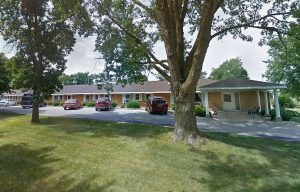New report details ongoing staffing shortages in Iowa nursing homes
June 6th, 2025 by Ric Hanson
(Iowa Capital Dispatch) – The latest analysis of federal data on nursing home staffing shows the overwhelming majority of nursing homes in Iowa and the United States are operating with less than the recommended staff to meet residents’ needs. With regard to their total nursing staff, eight of Iowa’s 410 nursing homes were staffed at least 40% below the level that was expected, based on residents’ acuity levels, during the fourth quarter of 2024. That marks a slight improvement from the 11 homes that fell into that category during the third quarter of the year. The data also shows that among the 50 states, Iowa continues to rank in the middle of the pack, with staffing levels that average roughly 20% below expectations.
The data is reported by the facilities themselves to the federal Centers for Medicare and Medicaid, and is then analyzed and published by the nonprofit Long Term Care Community Coalition. The coalition’s analysis shows that in late 2024, just over 90% of all nursing homes across the country were staffed below the level expected based on their residents’ needs. In Iowa, the homes that provided the lowest number of total nursing staff hours per resident, per day, are scattered among both rural and urban counties. Among the 12 lowest-ranked Iowa homes, six are operated by the same company — Care Initiatives of West Des Moines. The 12 homes, and their deviation from the expected hours per resident, per day, for all nursing staff include (in this area):
Fonda Specialty Care, Pocahontas County: 47.7% below expected levels.

Fonda Specialty Care in Pocahontas had the state’s lowest levels of nursing staff in the fourth quarter of 2024, according to a new report. Fonda Specialty Care and five other facilities operated by Care Initiatives of West Des Moines are among Iowa’s lowest ranked care facilities for total nurse staffing. (Photo via Google Earth)
Mount Ayr Health Care Center, Ringgold County: 43.9% below expected levels. This facility also was among the lowest-ranked facilities in the third quarter of 2024, when total nurse staffing was 44.3% below expected levels.
Avoca Specialty Care, Pottawattamie County: 42.2% below expected levels.
Panora Specialty Care, Guthrie County: 40.5% below expected levels. This facility also was among the lowest-ranked facilities in the third quarter of 2024, when total nurse staffing was 42.8% below expected levels.
The analysis also shows that many nursing homes continue to rely on lesser skilled certified nursing aides, rather than registered nurses, to provide much of the care – with many homes falling far below the recommended level of staffing by registered nurses. In Iowa, 12 nursing homes provided at least 60% fewer staffing hours by registered nurses than recommended. The Iowa facilities that deviated the most from the expected number of registered-nurse hours per resident, per day, during the fourth quarter of 2024 (in southwest Iowa) include:
Garden View Care Center, Page County: 75.6% below expected levels.
Caring Acres Nursing and Rehab Center, Cass County: 69.4% below expected levels.
The staffing data shows U.S. nursing homes, on average, delivered 3.75 hours of nursing care per resident, per day – which is significantly below the 4.95 hours that would be expected based on residents’ acuity levels. The expected staffing levels that are used as a benchmark in the analysis are calculated using an evidence-based, case-mix adjustment methodology that accounts for the specific care needs of residents within each specific care facility, using data provided by the facilities themselves. The average U.S. nursing home provided 3.75 total nurse staff hours per resident day in the fourth quarter – almost the same level as the 3.73 hours reported in the third quarter.
In addition to showing that just over 90% of nursing homes are reporting staffing levels below their expected levels, the analysis indicates the median nursing home fell 24.9% short of expected total staffing levels and 42.3% short of expected staffing levels for registered nurses. The analysis also found that more than a third of all care facilities — 36% of the total – reported no presence of a medical director, despite federal requirements that a medical director oversee the quality of clinical care provided in every facility. As in the third quarter of 2024, only two states — Alaska and Oregon — met or exceeded their expected staffing levels, while North Dakota (-4.1%) ranked fourth in staffing adequacy, narrowly missing its expected target.
The states with the worst average staffing levels in both the third and fourth quarters of 2024 included Illinois, Texas, Missouri, Georgia, New Mexico and Indiana. Congress is currently considering proposals that would require the U.S. Department of Health and Human Services to delay, until January 2035, enforcement of new minimum staffing standards for nursing homes.
(Read more, HERE)


